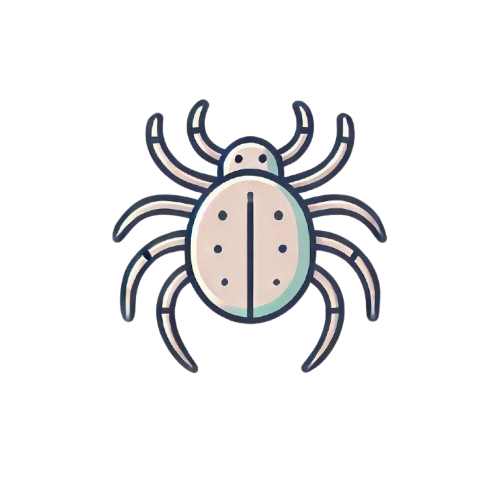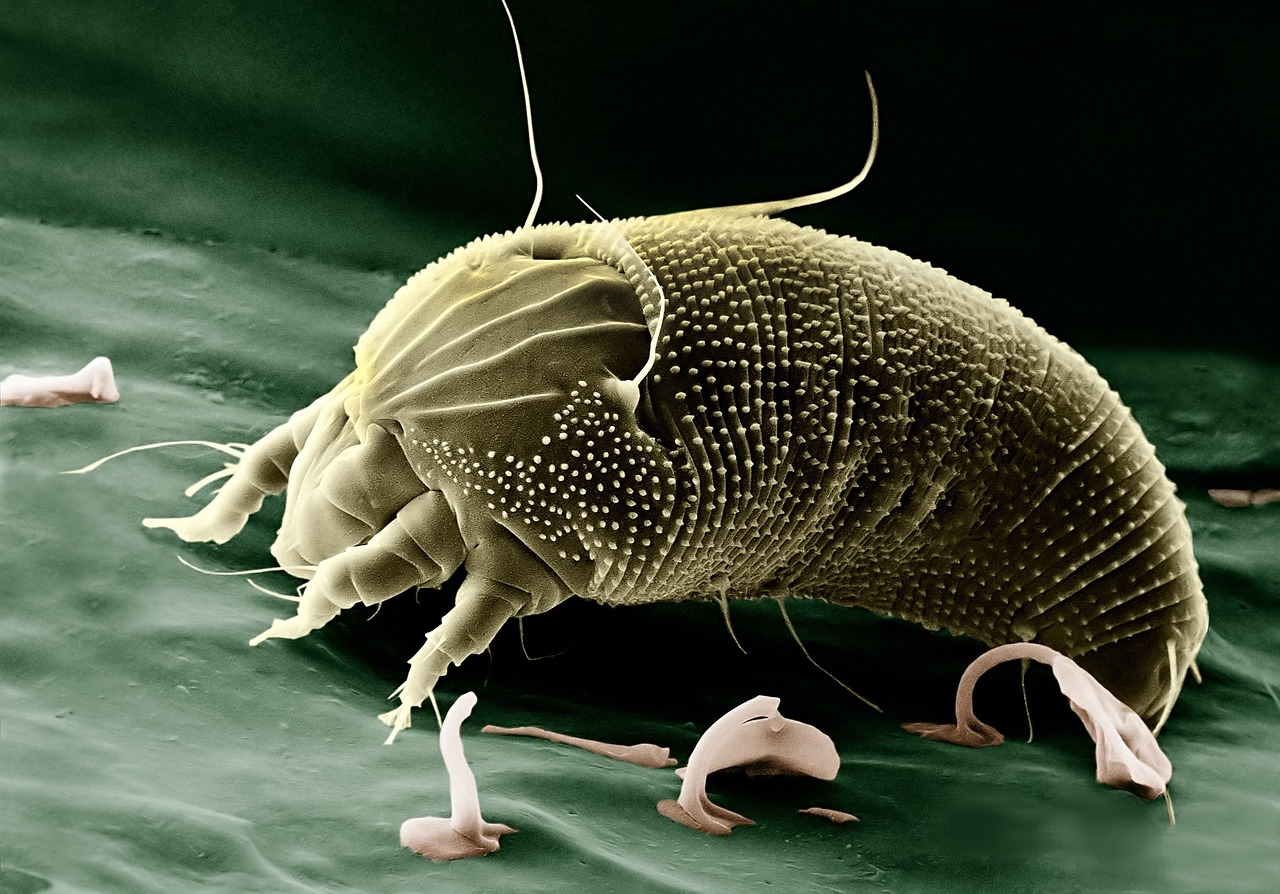Let’s dive into an in-depth exploration of the diversity of mite species.
I’ll provide a detailed overview, spanning various aspects of their taxonomy, ecological roles, adaptations, interactions with humans, and ongoing research.
Taxonomic Diversity
Classification and Phylogeny
Mites are classified into several orders within the subclass Acari, with the most well-known being Mesostigmata, Prostigmata, Astigmata, and Oribatida. Each order encompasses a wide range of species with distinct morphological and ecological characteristics.
Phylogenetic studies have revealed the complex evolutionary relationships among mite groups, highlighting their ancient origins and adaptive radiation.
Modern molecular techniques, such as DNA barcoding, have significantly enhanced our understanding of mite taxonomy, enabling the identification of cryptic species and the resolution of phylogenetic ambiguities.
Species Richness
Estimates of mite species diversity vary, with current numbers suggesting there may be over 48,200 described species, with potentially millions more yet to be discovered.
Notable families include Ixodidae (hard ticks), Tetranychidae (spider mites), and Demodicidae (follicle mites).
These families demonstrate the extensive morphological and ecological diversity of mites, ranging from plant feeders and soil inhabitants to parasites of vertebrates.
Identification Techniques
The identification of mite species relies on both morphological and molecular techniques.
Traditionally, acarologists have used detailed examinations of mite anatomy, focusing on features such as body segmentation, setae (bristles), and mouthparts.
Recent advances in molecular biology, particularly DNA sequencing, have provided powerful tools for species identification and phylogenetic analysis.
DNA barcoding, which uses short genetic sequences from a standardized region of the genome, has become a valuable method for identifying mites and uncovering cryptic diversity.
Ecological Roles and Habitats
Soil Mites
Soil mites, particularly those in the order Oribatida, play a crucial role in soil ecosystems. These mites contribute to the decomposition of organic matter, aiding in nutrient cycling and soil formation.
By breaking down leaf litter and other detritus, soil mites release essential nutrients that support plant growth.
Additionally, soil mites are involved in forming soil structure, enhancing its stability and water-holding capacity.
Plant-Associated Mites
Many mites are associated with plants, either as herbivores, predators, or mutualists.
Herbivorous mites, such as the two-spotted spider mite (Tetranychus urticae), are significant agricultural pests that feed on plant tissues, causing damage and reducing crop yields.
In contrast, predatory mites, such as those in the family Phytoseiidae, are valuable biocontrol agents that prey on pest insects and mites.
Some mites engage in mutualistic relationships with plants, such as mycorrhizal mites that help transport fungal spores to plant roots, facilitating nutrient uptake.
Animal-Associated Mites
Mites that associate with animals exhibit a wide range of ecological interactions, from parasitism to commensalism.
Parasitic mites, including those in the families Sarcoptidae (scabies mites) and Demodicidae (follicle mites), infest vertebrates, causing skin diseases and other health issues.
Commensal mites, on the other hand, live on or in animals without causing harm. Phoretic mites, for example, attach to insects like beetles or flies for transportation, benefiting from their mobility to reach new habitats.
Aquatic Mites
Aquatic mites are found in both freshwater and marine environments, where they play essential roles in aquatic food webs and nutrient cycling.
These mites can be predators, scavengers, or parasites, depending on their species and habitat.
Freshwater mites in the family Hydrachnidae are particularly diverse, exhibiting a range of feeding strategies and ecological niches.
Adaptations and Specializations
Morphological Adaptations
Mites exhibit a remarkable array of morphological adaptations that enable them to thrive in diverse environments.
For example, soil mites often have robust, heavily sclerotized bodies to protect against abrasion and predation.
Parasitic mites, like the Varroa destructor, possess specialized mouthparts for piercing host tissues and feeding on blood or lymph.
The body shapes and structures of mites are closely linked to their ecological roles and habitats, showcasing their evolutionary versatility.
Behavioral Adaptations
Mites have evolved various behaviors to enhance their survival and reproduction.
Some mites exhibit phoresy, where they hitch rides on larger animals to disperse to new environments.
This behavior is common among mites that inhabit transient or patchy habitats.
Feeding strategies also vary widely among mites, with some species using intricate silk webs to capture prey, while others employ stealth and ambush tactics.
Physiological Adaptations
Physiological adaptations enable mites to survive in extreme conditions, from arid deserts to deep ocean floors.
Many mites can enter a state of dormancy or diapause to withstand unfavorable environmental conditions.
For instance, some soil mites can survive desiccation by reducing their metabolic rate and water loss.
Additionally, mites have evolved mechanisms to detoxify plant secondary compounds, allowing herbivorous species to feed on a variety of host plants.
Mites and Human Interaction
Medical Importance
Mites have significant medical relevance, both as pests and vectors of diseases.
Dust mites (Dermatophagoides spp.) are common indoor allergens that can trigger allergic reactions and asthma in humans.
Parasitic mites, such as scabies mites (Sarcoptes Scabiei), burrow into the skin, causing intense itching and skin lesions.
Mites can also act as vectors for pathogens; for example, the house mouse mite (Liponyssoides Sanguineus) transmits Rickettsialpox to humans.
Economic Impact
The economic impact of mites is substantial, particularly in agriculture and animal husbandry.
Herbivorous mites, such as spider mites, can cause significant crop losses by damaging plants and reducing yields.
In livestock, parasitic mites like the northern fowl mite (Ornithonyssus Sylviarum) can decrease productivity and cause health issues.
Conversely, predatory mites are used in integrated pest management programs to control agricultural pests, reducing the need for chemical pesticides and promoting sustainable farming practices.
Cultural and Historical Aspects
Mites have also played roles in culture and history, often symbolizing nuisance and pestilence.
In traditional medicine, mites and their byproducts have been used in various remedies, although their efficacy is often scientifically unproven.
Historically, mite infestations, such as those caused by scabies, have been associated with poor hygiene and living conditions, highlighting the importance of public health measures.
Current Research and Future Directions
Recent Breakthroughs
Recent advancements in mite research have been driven by technological innovations in genomics, proteomics, and imaging.
High-throughput sequencing technologies have enabled the comprehensive characterization of mite genomes, revealing insights into their evolution, physiology, and interactions with hosts.
Proteomic studies have identified key proteins involved in mite development, reproduction, and host interactions, opening new avenues for control strategies.
Challenges in Mite Research
Despite significant progress, mite research faces several challenges.
The small size and cryptic nature of many mite species make field sampling and identification difficult.
Taxonomic impediments, such as the lack of comprehensive keys and trained acarologists, hinder the accurate classification of mite diversity.
Additionally, environmental changes, such as habitat loss and climate change, pose threats to mite populations and their ecological roles.
Future Prospects
Future research on mites will likely focus on addressing these challenges through multidisciplinary approaches.
Integrating molecular, ecological, and behavioral studies will provide a holistic understanding of mite diversity and their ecological functions.
Advances in biotechnology, such as gene editing and RNA interference, hold promise for developing targeted mite control methods.
Conservation efforts will also be crucial to protect mite biodiversity and the ecosystems they inhabit.
Conclusion
Mites represent a diverse and ecologically significant group of arthropods that play crucial roles in ecosystems worldwide.
Their adaptations, ecological interactions, and impacts on human activities highlight the importance of studying and understanding these tiny creatures.
Continued research and conservation efforts are essential to uncover the full extent of mite diversity and harness their potential for ecological and economic benefits.


Leave a Reply